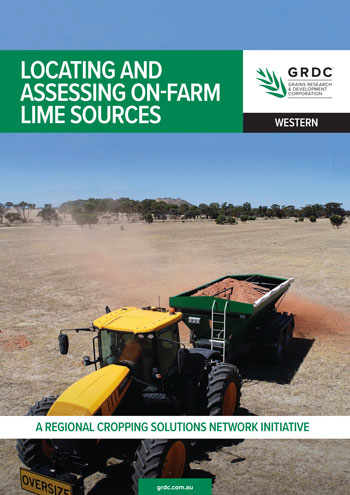Locating and Assessing On-Farm Lime Sources
Locating and Assessing On-Farm Lime Sources
Published: 27 Feb 2019
Introduction
The high cost of managing acidity using coastal lime in Western Australia’s eastern wheatbelt has prompted a number of growers to look for an alternative and economically viable lime source.
On-farm lime is being successfully located, extracted and spread on-farm at a lower overall cost than coastal lime, while also achieving the same soil pH increases. Improved soil acidity management is the result for these growers, as larger areas of their farms are being limed each year and higher rates of lime-equivalent are being applied.
Key points
- Soil containing carbonates (on-farm lime) can be used to treat soil acidity if it can be found, extracted and applied in a cost-effective manner
- Deposits of on-farm lime are found where:
- heavy loam soils have a pH 7.0 or higher;
- soil potassium (Colwell) levels are 500mg/kg or higher;
- white carbonate nodules are near to or on the soil surface; and
- Black Morrel (E. melanoxylon) native vegetation is growing
- The neutralising value is a measure of how much carbonate a lime source contains and will be the main factor in determining if it is economical to use the on-farm lime
- Viable sources are likely to need a neutralising value greater than 25 per cent; however, viability will also depend on the cost of extraction, transport and spreading
Download PDF
Region: West
ISBN: 978-1-921779-82-4 (Online)
GRDC Project Code: LIE1803-002SAX,

